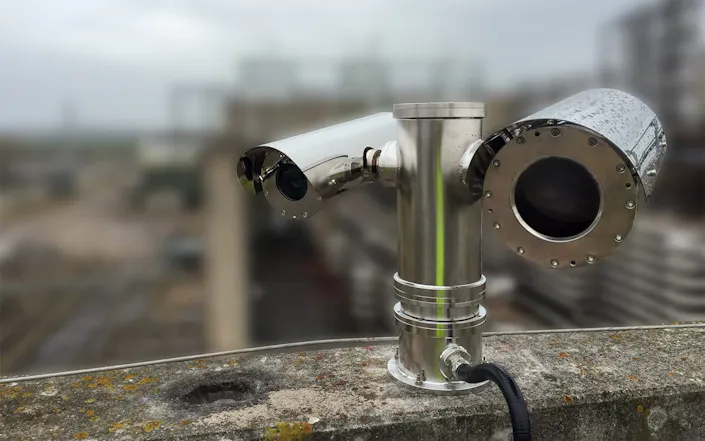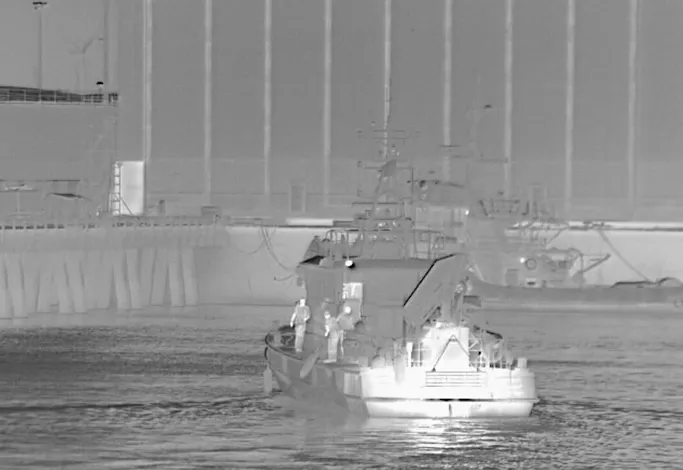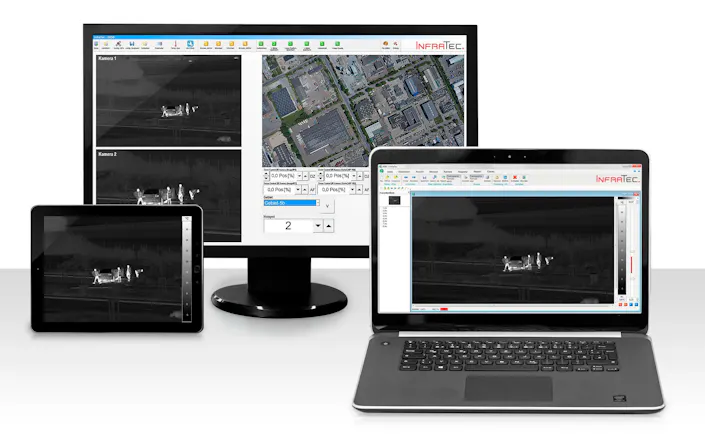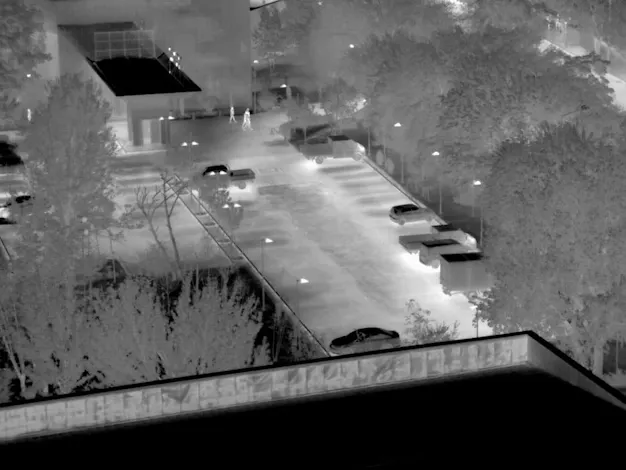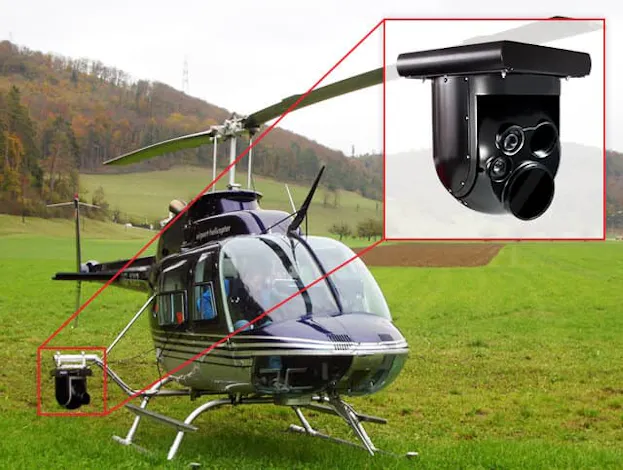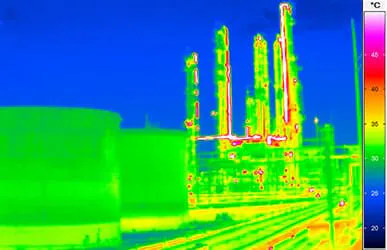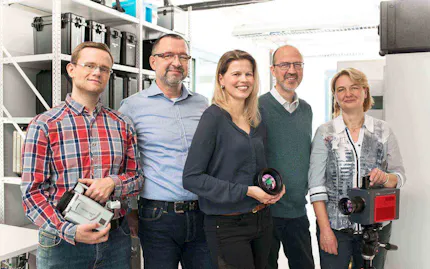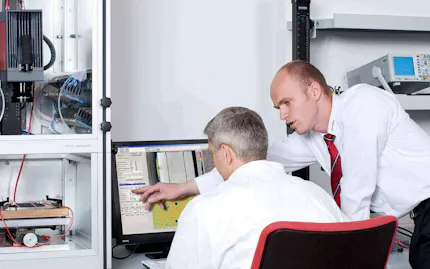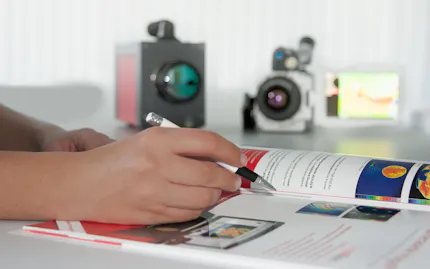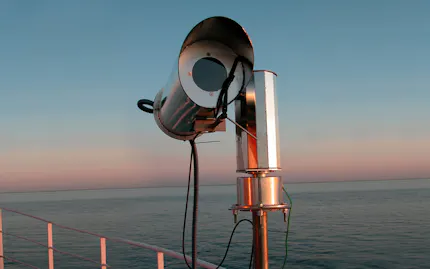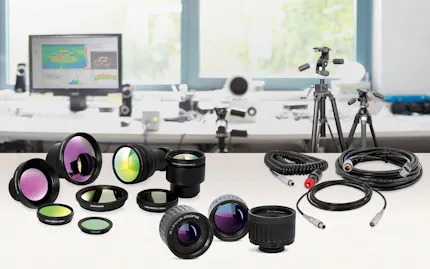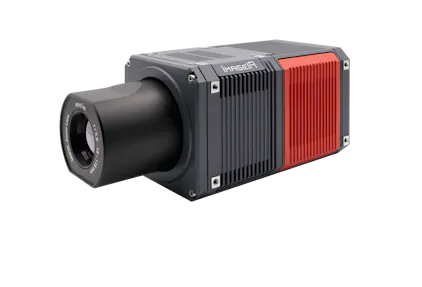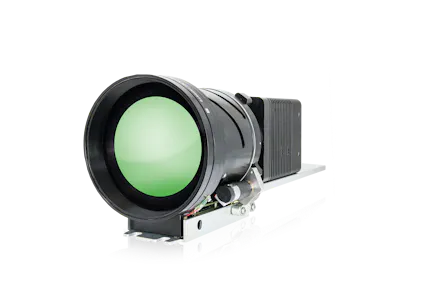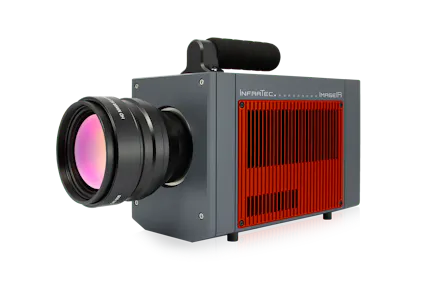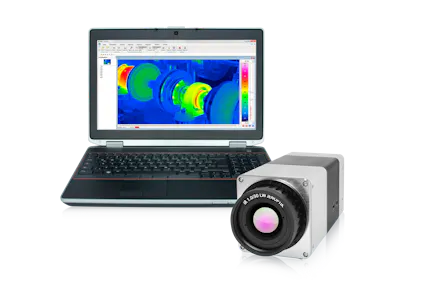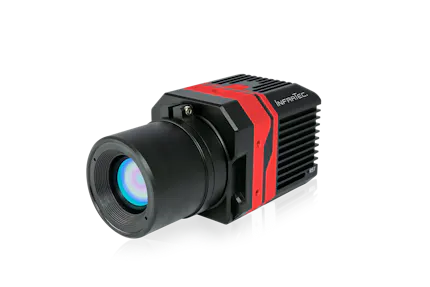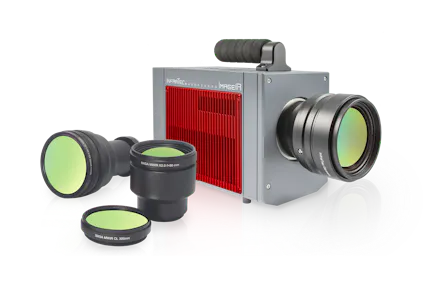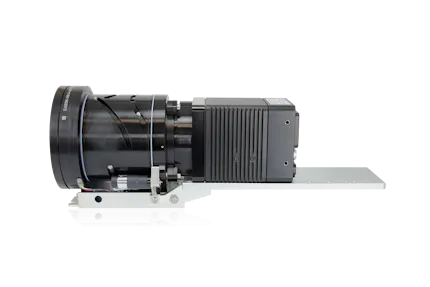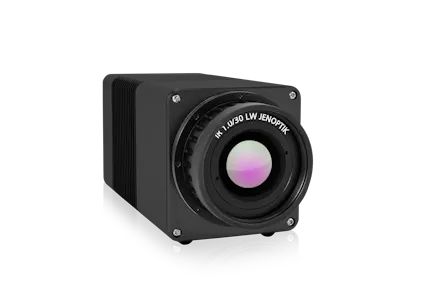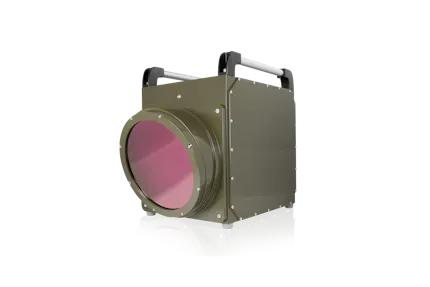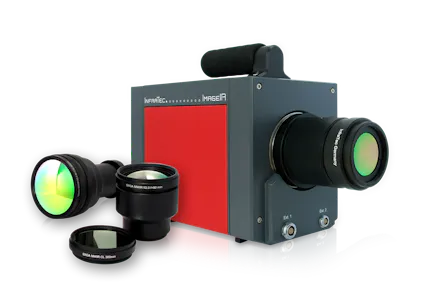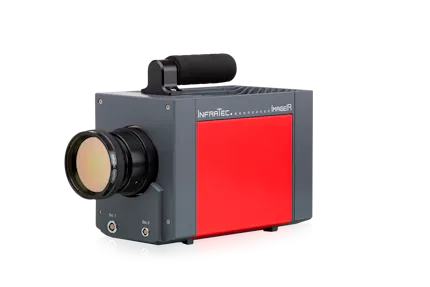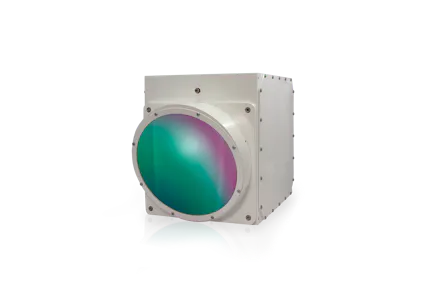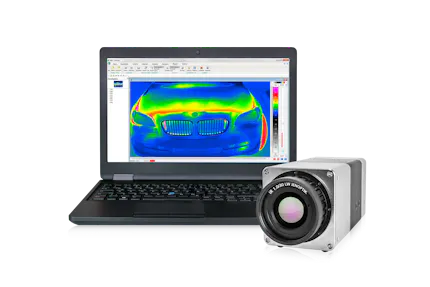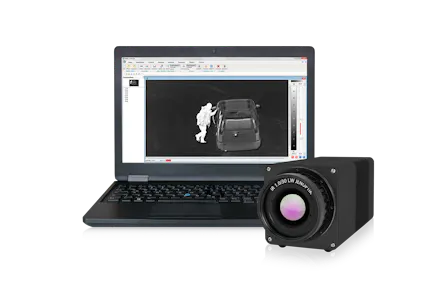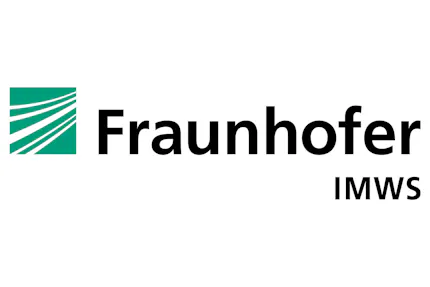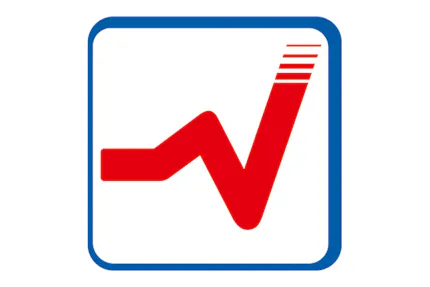Site Surveillance – IROD
Automatic Site Surveillance with Infrared Cameras
24 h / day surveillance of security zones
Detection of persons and vehicles
Detection range up to 18 km
Surveillance and documentation
Stationary and mobile solutions
Alerting even in case of darkness or poor visibility
All-weather, robust protective housing for use in harsh environments available
IROD – Superior when it Comes to Range
IROD (InfraRed Object Detection) is a modularly built, high-resolution thermal image monitoring system with manual intervention options. It provides the securing of extensive outdoor areas and security zones even at night as under bad viewing conditions.The intrusion and movement of unauthorised persons or vehicles can be reliably detected and documented.
As a passive infrared system, IROD works according to the following principle: All bodies emit thermal radiation depending on their temperature, whose intensity can be made visible by infrared cameras. Thus, the thermal radiation of persons or vehicles ensures, for example, that these can be detected even in complete darkness. IROD combines cutting-edge thermal imaging cameras with real-time image processing. Depending on the security task and associated requirements, the system can be configured customer-specifically and integrated into higher-level security systems.
Functions and Features
Monitoring of large areas with high geometrical resolution
With the aid of a pan / tilt head can already be used with a thermographic camera
Automatic scanning of several defined monitoring sectors
Short cycle times
Very high positioning accuracy and repeatability
Switch over to manual control for monitoring suspicious persons or objects
Implemented tracking option
High ranges up to 18 km (vehicle detection range) and up to 15 km (personnel detection range)
Acoustic and graphic temperature alarm
Choice between single and multiple camera system (visible light / infrared)
Merging function through combination with a visual camera including zoom
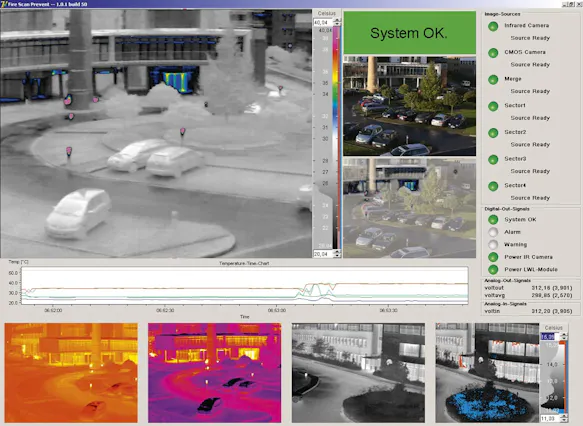

Would You Like to Know More?
It is not unusual for tasks to be associated with special requirements. Discuss your specific application needs with our specialists, receive further technical information or learn more about our additional services.
High-end Camera Technology
Equipped, depending on the requirement, with robust, uncooled microbolometer cameras or highly-sensitive, cooled thermal imaging systems
Detector resolutions of (640 × 480) to (1,920 × 1,536) IR pixels (Full HD thermography)
Lens range including very light-sensitive f/1.0-teleoptics with fixed focal length for the uncooled camera system VarioCAM® High Definition as well as 30× zoom lenses (motorised) of the ImageIR® series
Provision of proven permanent application solutions also for surveillance and monitoring tasks based on many years of experience in the production of turnkey solutions even for extreme environmental conditions
General Performance Parameters
| Spectral range* | (2.0 ... 5.7) μm / (7.0 ... 14) μm |
| Detector format (IR pixels) | (640 × 480) to (1,920 × 1,536) |
| Operating temperature range | (-35 ... 55) °C |
| Range performance* | Detection range for vehicles up to 18 km, for persons up to 15 km |
| Installation | Fixed field of view or pan / tilt head (for multiple monitoring sectors) |
| Monitored field of view | Approx. (0 ... 360) °C, depending on installation |
| Monitoring cycle | Approx. (1 ... 60) s, depending on field of view |
Control Unit
Can be used with stationary (desktop PC) and mobile (notebook, tablet) terminal equipment
PC supported with integrated archiving unit
Compatible with all camera types including ImageIR® and VarioCAM® High Definition
Pan / tilt head can be operated conveniently via software
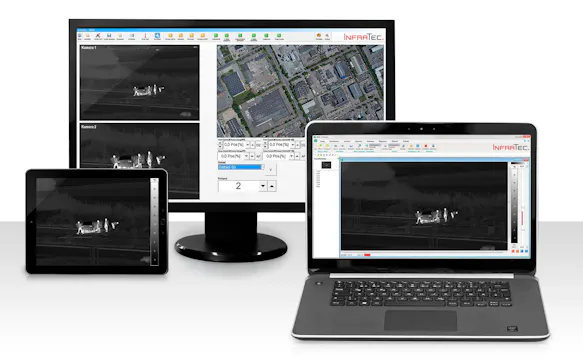
The Outdoor Unit – Fully Protected for Harsh Environmental Conditions
Depending on the measurement and inspection task, thermal imaging cameras are exposed to a wide range of environmental conditions. Dirt, water, climatic or mechanical extremes place high demands on the sustained precision and reliability of the devices. Based on experience from 30 years of thermographic practice, InfraTec has developed protective housings adapted to extremely different situations on site.
Light aluminium structure or solid stainless steel cover, thermal imaging camera individually or together with visual camera, integrated purge air supply or active air cooling, infrared special foil or germanium window – depending on the purpose, solutions are available, which perfectly match the conditions of the monitoring area and the measurement object. Both the thermal imaging cameras with cooled detectors from the ImageIR® series as well as the VarioCAM® High Definition series with uncooled microbolometer detectors can be equipped with a wide range of protective housings.
Protective Housing
The production of the InfraTec protective housing depends on the ambient conditions, under which the monitoring system is to be used. Users can choose between standardised and individual protective housings.
Protective housing for a thermographic camera
Protective housing for a thermographic camera and visual camera
Combination of different types of protective housings incl. pan/tilt head
Special protective housing (individual production)
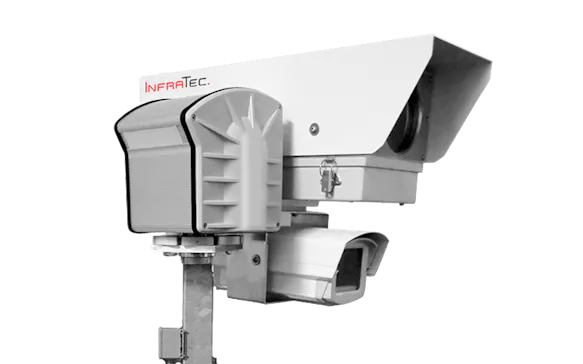
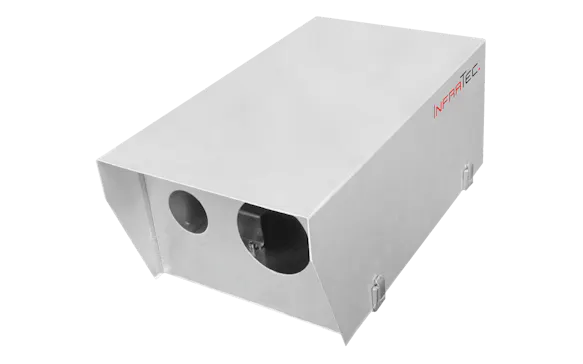
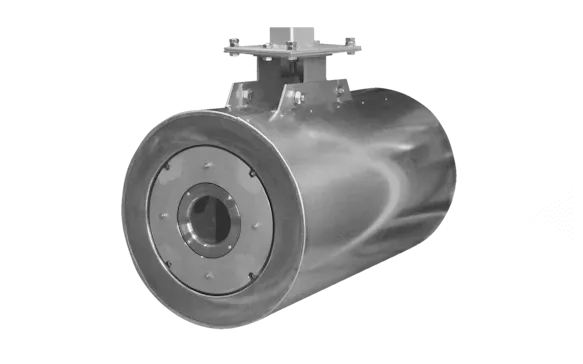
Housing Protects Against
Penetration of dust and splashing water
Mechanical damage
Moderate, temporary heat
Other Mounting Options
Roof construction for vehicle-based property protection
Airborne thermography via Gimbal system
Product Flyer
Get all the information you need at a glance in our product flyers
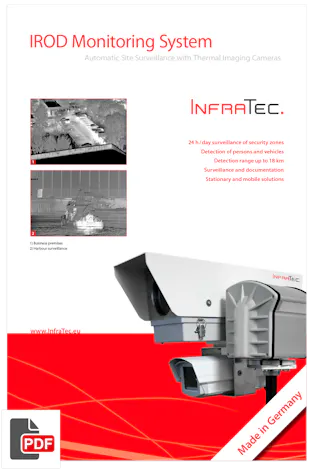
IROD-Software – Efficient, Detailed and User-friendly
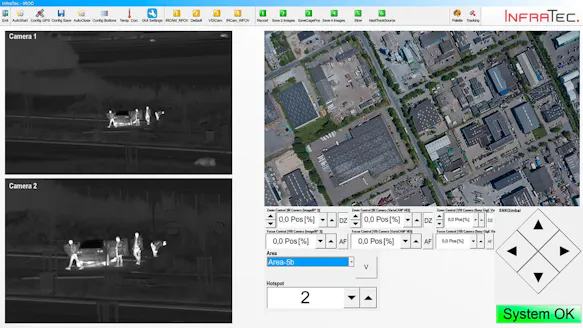
Continuous display of current thermal images of all sections (mosaic-overview)
Simultaneous display of live image (thermal image and colour video)
Camera and system status indication
Merging of live images of thermographic and video camera
Recording of maximum, minimum and average temperature of each section due to individual configuration
Graphics of temperature-time profile of all sections
Logging of operations
Filing of image data
Possibility of tracking in addition to fully automated queries
Location-independent use of the PC-based system; can be used both stationary (desktop PC) and mobile (notebook, tablet)
Further Areas of Application
Border security
Critical infrastructure (e. g. harbours, airports), tunnels, railway premises
Surveillance of security zones or outdoor areas at night and under bad viewing conditions
Documentation of unauthorised intrusion of persons and vehicles
Fully-automatic operation without the constant presence of operating personnel
Adaptation to changed terrain conditions by the user
